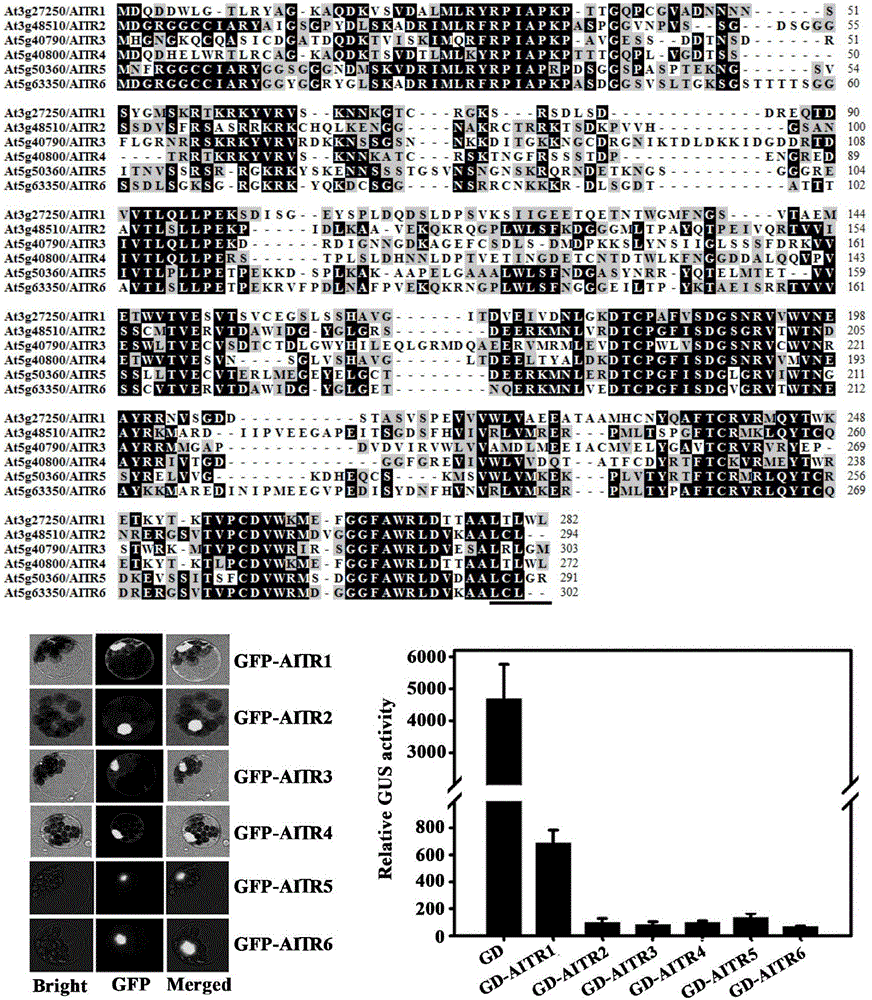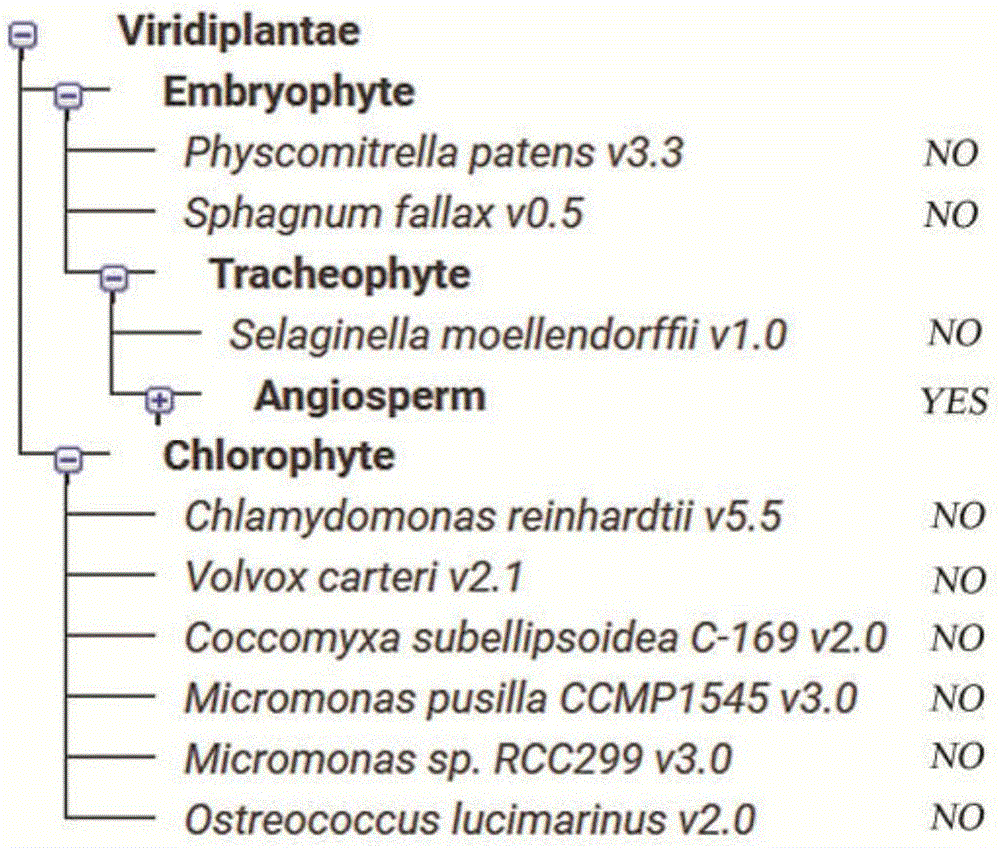Transcription inhibitor family gene and application thereof
A gene and plant technology, applied in the application field of improving plant stress resistance, can solve problems such as restricting the commercial value of transcription factors
- Summary
- Abstract
- Description
- Claims
- Application Information
AI Technical Summary
Problems solved by technology
Method used
Image
Examples
Embodiment 1
[0019] Acquisition of Arabidopsis AITRs
[0020] According to the transcriptome data measured by the inventors, it was found that the expressions of six related genes with unknown functions, At3g27250, At3g48510, At5g40790, At5g40800, At5g50360 and At5g63350, were all induced by ABA. The qRT-PCR results also proved that exogenous ABA treatment can induce 6 genes. And the expression of these genes in the ABA synthesis mutant aba1-5 was significantly reduced (attached figure 1 ). Through amino acid sequence analysis, it is found that the amino acid sequence of At3g27250 has the transcription repression domain LxLxL. The protoplast transfection test of Arabidopsis found that the proteins encoded by all six genes are located in the nucleus and can also inhibit the expression of reporter genes. In order to reflect its characteristics, the inventor named them ABA-induced transcription repressor1 (AITR1), AITR2, AITR3, AITR4, AITR5 and AITR6 (attached figure 2 ). The results indicate ...
Embodiment 2
[0022] Acquisition of AITRs in different plants
[0023] Using the complete amino acid sequence of AITR1 to perform BLAST detection on the NCBI website, it was found that only plants have its homologous protein. Using the complete amino acid sequence of AITR1 to perform BLAST detection on each plant on the phytozome website, it is found that only angiosperms have their homologous protein coding genes (attached image 3 ), and there are different numbers of homologous protein-coding genes in all angiosperms. A total of 162 homologous protein-coding genes were found in 42 plants except Arabidopsis. See Table 1 for relevant information about AITRs coding genes of 43 different plants, including Arabidopsis. The results indicate that AITRs are in a family of proteins that are conserved in angiosperms.
[0024] Table 1. Distribution of AITRs in angiosperms
[0025] Table 1.AITRs in angiosperms
[0026]
[0027]
Embodiment 3
[0029] Detection of transcriptional activity of soybean and tomato AITRs
[0030] In order to test whether AITRs genes in other plants are also induced by ABA, the inventors took tomato as an example to test and found that the expression of AITRs genes in 3 tomatoes was induced by ABA. The inventors further used protoplast transfection for detection and found that the AITRs of the three tomatoes were also located in the nucleus and could inhibit the expression of reporter genes. Similarly, the AITRs of 6 soybeans are also transcription repressors (attached Figure 4 ). The results indicate that AITRs are a new family of transcription inhibitors conserved in angiosperms.
PUM
 Login to View More
Login to View More Abstract
Description
Claims
Application Information
 Login to View More
Login to View More - R&D
- Intellectual Property
- Life Sciences
- Materials
- Tech Scout
- Unparalleled Data Quality
- Higher Quality Content
- 60% Fewer Hallucinations
Browse by: Latest US Patents, China's latest patents, Technical Efficacy Thesaurus, Application Domain, Technology Topic, Popular Technical Reports.
© 2025 PatSnap. All rights reserved.Legal|Privacy policy|Modern Slavery Act Transparency Statement|Sitemap|About US| Contact US: help@patsnap.com



